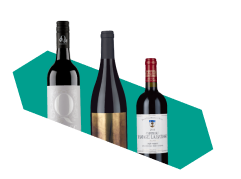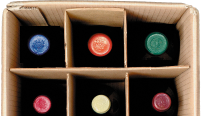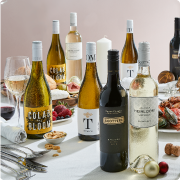Versatile, juicy and refreshing – no wonder Chardonnay is the world’s most popular white wine. Made everywhere from France and Chile to Australia and New Zealand, Chardonnay wine can vary greatly in style, ranging from light and fruity to full-bodied and richly flavoured.
This dramatic range of flavour profiles is influenced by the region where the grapes are grown and whether the wine is oaked or unoaked. Understanding the impact of oak on Chardonnay can help you find the right style that matches your taste preferences.
Why is some Chardonnay aged in oak?
Ageing red and white wine in oak barrels is common practice in the wine world. Other alternatives include stainless steel tanks or concrete vats, however these have a less pronounced impact on wine compared with oak.
If a Chardonnay is labelled as ‘oak-aged’, it means it has spent time (typically a few months) in oak barrels before being bottled. This can affect the wine in several ways, including its flavour, texture and aroma.
Oak barrels can be either brand new or used. New barrels are often toasted before use, which caramelises the sugars in the wood. Chardonnay wines aged in these barrels develop delicious secondary notes of vanilla, pastry, toasted brioche, coconut, cashew and other nuts. The more a barrel is used, the less impact it has. Wines aged in used barrels have more subtle flavours of vanilla and toast. Chardonnay can also be aged in ‘neutral’ oak barrels – barrels used over so many years they no longer affect the wine’s flavours and aromas.
Not all oak-aged Chardonnays are the same, though. The type of oak used can also influence the wine. The three most commonly used are American, French and Hungarian. American oak is slightly sweeter and stronger than the most popular French oak, which adds a subtle spice. Hungarian oak’s influence ranges from sweet to spicy. The size of the barrel can also have an impact – the smaller the barrel, the more intense the changes to the wine.
Beyond adding new flavours and aromas, oak-ageing Chardonnay has some other benefits.
Oak-ageing Chardonnay can help the wine last longer. The tannins in the oak act as a natural preservative as they are infused into the wine. This means the Chardonnay can last a few years longer in the bottle than unoaked styles.
However, there is such a thing as over-ageing, where oak-aged wines can turn bitter and the oak’s influence overpowers Chardonnay’s vibrant fruit characters.
The process of ageing Chardonnay in oak barrels isn’t the sole method to introduce an oaky touch to this wine. Some winemakers use an alternative, more economical method, which involves adding oak staves or oak chips to the wine rather than using oak barrels. This process also imparts flavour and complexity to the wine, and once the winemaker has achieved the desired effect, the oak is removed from the tank.
Another method is barrel fermentation, where the juice is fermented directly in the barrels to become wine. This softer approach results in more delicately incorporated oak influences. The resultant wines are typically creamier with pastry notes due to lees contact (and potential lees stirring) in the barrel. They are also fuller-bodied and boast potential for ageing. Due to its nature, barrel fermentation is generally employed to craft premium wines.
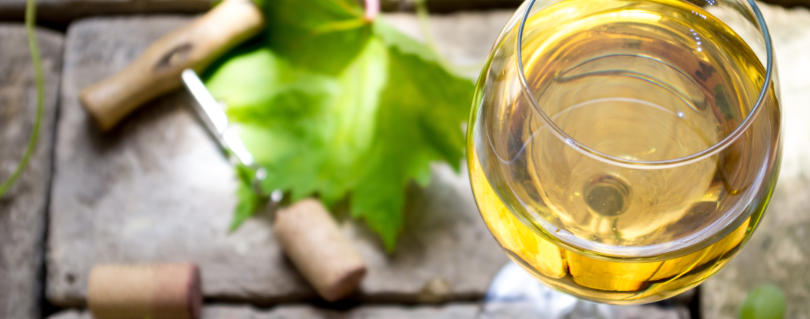
A quick note about MLF
The ‘buttery’ or ‘creamy’ descriptions often associated with oaked Chardonnay stem from a separate process known as malolactic fermentation (MLF or Malo). This chemical transformation turns the sharp malic acid in wine into a softer lactic acid – the same kind found in milk. Winemakers can choose to let this happen or prevent it.
While some unoaked Chardonnay wines undergo MLF, the process is more common with oaked Chardonnay. That’s why an oaked Chardonnay’s toasty, vanilla accents typically come paired with buttery, creamy notes.
Unoaked Chardonnay
Strong notes of butter, vanilla, baking spice and toast aren’t to everyone’s liking. If you like your white wine to be light, vibrant and fresh, you may prefer unoaked Chardonnay. This wine style is often the go-to choice for those who love refreshing white wines boasting crisp flavours and floral fragrances.
Unoaked Chardonnay wines are usually matured in stainless steel or concrete vats, with some instances of ageing in neutral oak that doesn’t influence flavour. This limits oxygen exposure so the wines retain their fresh, fruity essence. As they seldom undergo malolactic fermentation, their innate zestiness is preserved.
High-quality, cool-climate unoaked Chardonnays are produced across the world, from New Zealand to New York. Chablis, a wine region in northern Burgundy, France, is a renowned example of this type of Chardonnay. In Australia, standout offerings can be found in the Yarra Valley and the Mornington Peninsula.
Pair a glass of unoaked Chardonnay with light, simple dishes featuring complementary flavours. A colourful vegetable risotto, grilled salmon or fresh sushi would all benefit from this style of Chardonnay’s citrus hints, juicy white fruit notes and bright acidity. Try our Scarpatoni Chardonnay 2024, made by the award-winning Scarpatoni brothers – clean, crisp and classic, with hints of citrus and lychee.
Oaked Chardonnay
Oaked Chardonnay wines are typically rich, buttery, creamy and smooth – a treat for those who prefer more full-bodied white wines. This results from the wine’s slow oxygen exposure through the wood or from malolactic fermentation. An oaked Chardonnay typically looks more golden in colour.
While the choice to oak-age Chardonnay isn’t solely dependent on climate, winemakers in warm climates often produce a more full-bodied Chardonnay, as their ripe, juicy yellow fruit notes are better able to stand up to the oak’s influence. In warmer climates, Chardonnay grapes achieve an extra level of ripeness, leading to wines with higher alcohol content and riper tropical flavours including pineapple, yellow peach and nectarine, papaya and melon. These wines are often more compatible with the vanilla, toast and spice flavours that come from the oak.
However, the use of oak in Chardonnay production isn’t exclusive to warm climates. Ultimately, the decision to use oak during the fermentation or ageing process is made by the winemaker based on the style they want to achieve.
An oak-aged Chardonnay is a must-serve alongside heartier, richer dishes, especially those with a creamy element – think gooey mac ‘n’ cheese, earthy mushroom risotto or creamy chicken pasta.
Miles From Nowhere Margaret River Chardonnay 2023 is one of our favourites from Margaret River. Expect fragrant characters of lemon, peach and hazelnuts, with a fine body and creamy texture.
Unoaked versus oaked Chardonnay
Although made from the same grape, unoaked and oaked Chardonnays can feel like entirely different wines. Their differences can be narrowed down to three key categories – ripeness, winemaker’s influence and colour.
Where Chardonnay grapes are grown can majorly affect the style of wine they produce. Chardonnay wines have riper tropical fruit notes in warmer climates like California, Australia, Chile and Argentina. These wines, with their more intense, juicy flavours, can better withstand oak ageing.
Both the environment the grapes grow in and the winemaker’s style can influence a finished wine. Unoaked Chardonnay wines better express the soil type and climate the grapes grew in, but oaked styles better showcase the winemaker’s skills.
You can often tell the style of a Chardonnay by its colour. Unoaked styles are typically a pale yellow, while oaked styles have a darker, golden hue.
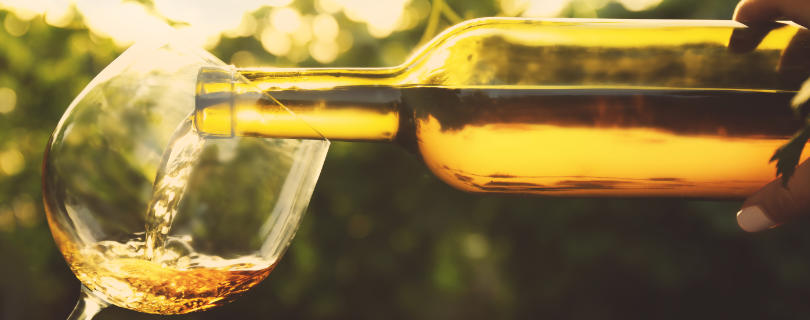
Which style of Chardonnay is best?
Unfortunately, this question has no simple answer – it’s all down to personal preference!
If you want a white wine that’s crisp and refreshing, brimming with citrusy hints and notes of orchard fruits, opt for an unoaked Chardonnay. Clean and bright, this is the ideal wine to pair with grilled fish, a vibrant green risotto or chicken in a tangy, lemon sauce.
But if you prefer something rich and creamy or enjoy more juicy tropical fruit flavours or wines with toasty, warming hints, opt for a bottle of oaked Chardonnay. Pair a glass with a creamy soup, roast poultry like chicken or turkey and vegetable-based lasagne.
Of course, there’s nothing like trying both styles to find your favourite.


